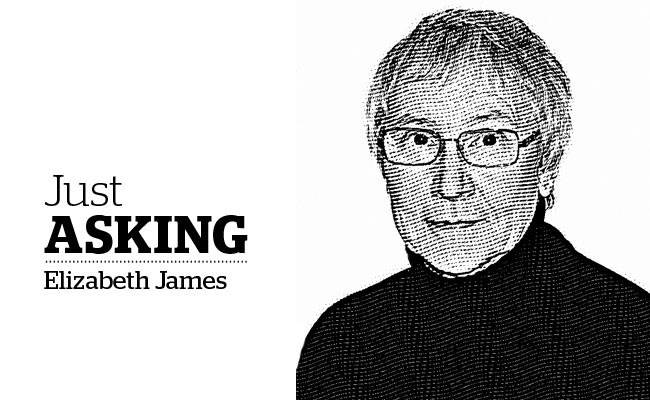“Last April, with a stroke of the pen, without Agricultural Land Commission review or public hearings, the provincial government made the largest exclusion of land from the Agricultural Land Reserve in B.C. history.”
– Gwen Johansson, May 3, 2015
Hudson’s Hope Mayor Gwen Johansson noted that 3,715 hectares (9,180 acres) was removed from production to make way for the Site C dam. “That’s equal to 72 per cent of all ALR land in Richmond,” she said.
Supported by Finance Minister-cum-Abbotsford farmer Mike de Jong, the hands wielding the pen belonged to Premier Christy Clark and Energy Minister Bill Bennett.
The subject of a feel-good profile in last Saturday’s Vancouver Sun, de Jong told journalist Rob Shaw his Abbotsford acreage is a “very special place” for him and that he “likes the sounds of the country far more than the sounds of the city.”
Too bad he and his colleagues don’t feel the same way about the members of the Peace Valley Landowners’ Association who will be flooded under the dam.
Considering all that against the backdrop of news about a wildfire burning 55 kilometres southwest of Prince George, I realized my concerns about Site C were intertwined with several other serious issues, all of which are converging to paint a disturbing picture of the British Columbia future generations will inherit.
In a scrambled chronology here they are:
Site C and the provincial debt:
In June 2013, while replying to questions from former director of the Peace River Regional District Arthur Hadland, BC Hydro’s CEO at the time, Charles Reid, confirmed that BC Hydro owed nearly $70 billion — $15 billion in long-term debt, $4.6 billion in deferral accounts, and about $50 billion in future contractual obligations.
The debts were “secured” by $100 billion in “assets” that Hadland points out are shown in Hydro’s 2012 books to be a mere $21 billion — the remainder consists of uncertain replacement costs.
Keep those numbers in mind as we move on to Site C and a Moody’s Credit opinion:
On Dec. 10, 2014, Moody’s Investors’ lead analyst for B.C., Michael Yake, sent Hadland a copy of his May 2014 credit opinion. Part of that opinion recorded Moody’s current and projected numbers for net direct and indirect debt as a percentage of provincial revenues: 2011 and 2013 — total debt (for all provincial entities, including Hydro) equalled 75.5 and 88 per cent of revenues, respectively. The forecast revenues for 2014 and 2015 were 92.5 and 93.1 per cent.
The dam project had not yet been approved at the time of Yake’s projections, so what happens to his numbers when you add in project capital costs of $9 billion? What happens if interest rates should climb by half to one per cent?
Eighty families — Site C and the Bobtail Mountain wildfire:
At 8:10 p.m. on May 20, a Ministry of Forests bulletin reported that the Bobtail fire was 45 per cent contained. Eighty local residents remained evacuated; onsite resources included a large contingent of firefighters, helicopters, heavy equipment and six air tankers.
RCMP and B.C. Wildfire personnel are investigating what they suspect is a human-caused conflagration.
So while we are rightly concerned about the loss of 25,000 hectares of pristine forests and the wildlife they support, the premier and her ministers have no trouble with wiping out 39,000 hectares of what farmer/agroecologist/politician Harold Steves calls Class 1 alluvial soil. “In view of the extreme droughts in California, the Peace is our best bet for adding food security in a changing climate,” Steves said.
Nothing daunted, the province continues to remove itself from accountability by refusing to allow the B.C. Utilities Commission to conduct an independent analysis of the Site C Review Panel report and by discounting the seven legal challenges already underway.
In a letter to the B.C. business community and ratepayers on Apr. 3, Hadland listed 11 well-supported reasons for saying BC Hydro is our “failed utility” and quoted recent courageous remarks by the former chairman of the joint review panel hearings, Harry Swain, who said the provincial government’s failure to investigate energy alternatives to Site C was a “dereliction of duty.”
To me, Bennett’s refusal to honour the utilities commission’s role comes too close to what the legal profession might define as “contrived ignorance” of inconvenient truths about the Site C project — dubious cost estimates, exaggerated power demands and the existence of valid alternatives like geothermal and solar energy.
Speaking at a recent Peace Valley Landowner Association event, respected energy economist Robert McCullough summarized his report on the dam: “Using BC Hydro’s assumptions, the difference in cost between the least expensive option and Site C is minimized,” he said. “Using industry standard assumptions, Site C is more than three times as costly as the least expensive option.”
It seems clear that, as the utilities commission can attest, the province has no wish to be hindered by expert opinion — or by the facts.
After 16 years with the multi-disciplinary Perinatal Programme of B.C. and later in various endeavours in the growing high-tech industry, Elizabeth James now connects the dots every second Wednesday on local, regional and provincial issues. Email her at [email protected].
What are your thoughts? Send us a letter via email by clicking here or post a comment below.



